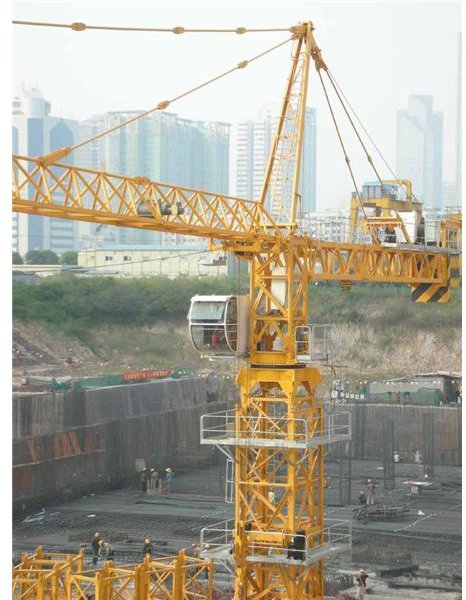What Is A Crane?
What Is A Crane
A crane is normally fitted with a drum that can wind rope on it and chains or wire ropes for holding the materials. Sheaves are installed that are used for the lifting and lowering of the objects, and also for their horizontal movement. Cranes create mechanical advantage by a suitable configuration mechanism. Thus, loads can be moved and lifted that otherwise would not be within human capability.
Stability Of Cranes
Stability of cranes is of utmost significance to ensure the safety of humans and materials. Though adequate safety features are
incorporated in cranes by the manufacturer, the user must be aware of the safety requirements that must be fulfilled to ensure their safety. Stability of cranes can be achieved by ensuring that the total of moments at the base should be zero. In actual usage, the permissible load to be lifted, that is called the rated load, is less than the tipping crane load. This provides a margin of safety for the crane stability. Generally, the crane safety standards recommend the rated loads to be 75% to 85% of the tipping loads. These safety features are determined keeping in view the design features of the crane, the soil conditions, the uniformity of ground level, and other factors. Cranes used on ships have more stringent safety margins due to the dynamic load conditions. When cranes are used on a fixed platform, the moment produced by the jib, boom, and load is opposed by the platform base. The stress in the base should be lower compared to the material yield stress.
Tower Crane
Tower cranes are one type of modern crane. Tower cranes are secured with the

ground, or fixed with the walls of structures. Tower cranes normally offer the most suitable arrangement of the lifting capability and the height, and are most appropriate for the tall buildings construction. The boom and the counter-jib are located on the turntable. During the suspension of loads by the jib, the counter-jib hold concrete blocks as counterweights. The crane is operated from a cabin located at the tower top, or can be directed by remote control from the ground. Electric motors are used to move the wire cables through sheaves. The operator hooks or unhooks the loads by working in combination with the rigger. The operator and the rigger use radio contact or hand signals, for the crane operation. Normally, during construction of tall buildings, the height of the tower cranes is considerable, due to which a small crane or a derrick is used for the disassembly of the tower crane.
